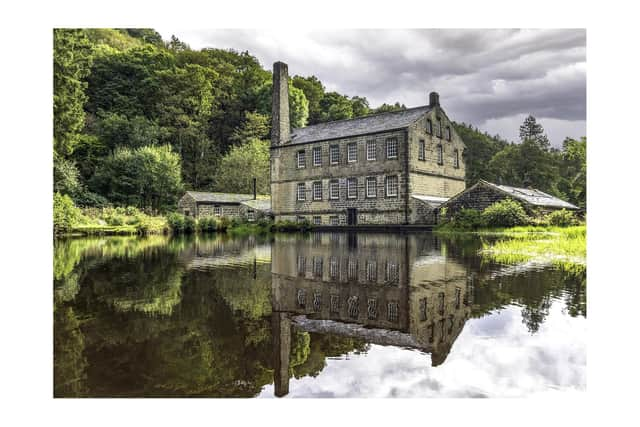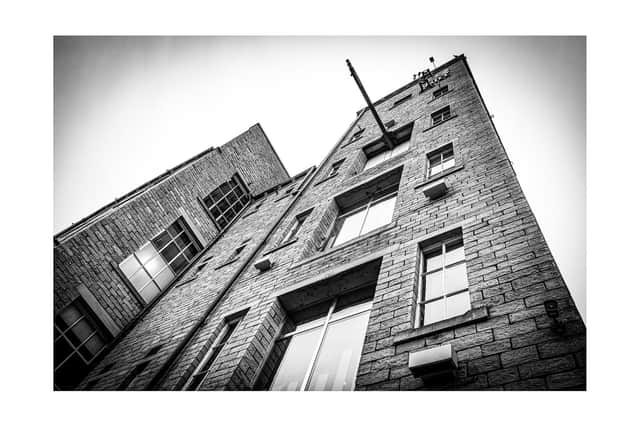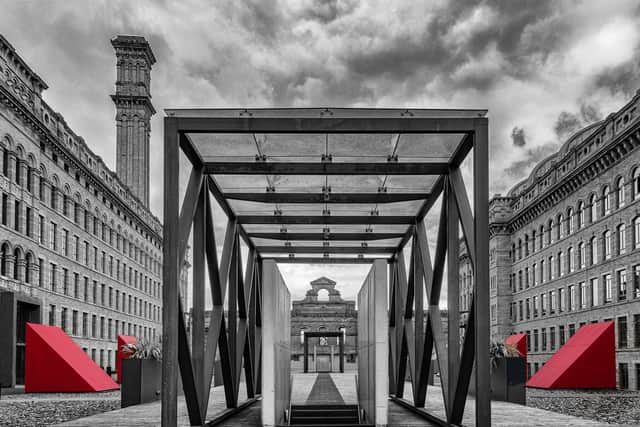Charting the transformation of Yorkshire abandoned mills in pictures
Mills used to be the beating heart of the Northern economy but now hundreds stand empty and abandoned across the region.
However an increasing number of sites have been subject to inventive and imaginative regeneration projects and now a new project - Mills Transformed - is charting dozens of sites that have been given a new lease of life in a variety of passion projects.
Advertisement
Hide AdAdvertisement
Hide AdThe project, which has resulted in a new website and exhibition and is also leading to a forthcoming book, is the brainchild of Neil Horsley.


Horsley is a member of Bingley Camera Club, which chose the theme of ‘Mills and Hills’ for its 2021/22 exhibition at Cliffe Castle Museum in Keighley.
It kickstarted an unexpected new passion for Horsley as he started exploring a growing number of regenerated mill sites and got to know some of the extraordinary people behind them.
He explains: “I was looking out for images of mills and regularly walk by Goits Stock Waterfall near Bents Mills.
Advertisement
Hide AdAdvertisement
Hide Ad“It is hidden away a bit and it is privately owned but I was always intrigued by it and knew the people who owned it also owned further mills.


“I contacted them and said this exhibition is going on and could I come along? They couldn’t have been more helpful.
“They are Janet and John Emanuel. Basically they bought this mill when it was completely derelict and had no roof. It had been empty for 15 years.
“Over seven years they transformed it and it is now holiday accommodation. It occurred to me afterwards that the story was not only about a mill being transformed and repurposed but also this kind of human interest story of these people who take on these kind of Grand Design-type projects.”
Advertisement
Hide AdAdvertisement
Hide AdHe says he started approaching other mill site owners and soon his efforts snowballed into a project of their own.


“I thought I will just keep going and approach people. I assumed there wouldn’t be that many, maybe half-a-dozen or so, but I’m now onto mill 29,” he says.
“But basically I started doing this and set up a website and got offered the chance to do an exhibition at the Dandelion Cafe in Saltaire which is on for three months. Then I’ve been offered the chance to do a book about it as well.
“I originally trained as a town and country planner and had a career more in urban regeneration for a company in Nottingham and moved back to Yorkshire about 10 years ago.
“I’m semi-retired and this is kind of a hobby.”
Advertisement
Hide AdAdvertisement
Hide Ad

Most of the mills he has photographed are in the Yorkshire area but he has also ventured to Lancashire and as far south as Shropshire, where the Flaxmill Maltings building in Shrewsbury has been the subject of a huge restoration scheme backed by £20m from the Heritage Lottery Fund in recent years.
Horsley says that among the local highlights he enjoyed visiting were The Carding Shed near Holmfirth where Ian and Nicola Kellett have established a classic car restoration workshop along with the popular Oil Can Cafe. The couple live in a flat on the mill site.
There was also Ponden Mill, which has previously featured on George Clarke’s Amazing Spaces television programme. It was a cotton mill that first opened in 1791 but in the 1970s became a shop and cafe visitor attraction. That iteration closed in 2008 but new owners Richard and Barbara took on the derelict site six years later and have transformed it into an events space with stunning camp ground facilities.
“He is an archaeologist from San Francisco and how he has ended up at Ponden Mill was a bit of a surprise to him as much as anyone else,” Horsley smiles.
Advertisement
Hide AdAdvertisement
Hide Ad“He is quite an interesting character and the mill itself is an events space for things like weddings but they’ve got a campground all around. You have got all these quirky things like an old wagon train out of a cowboy film you can sleep in and have a campfire at night.
Horsley has also paid repeated visits to the ongoing project to restore the Old Town Mill above Hebden Bridge.
“Ben Clay from Clay Construction and his team have been painstakingly redeveloping the mill for housing. It is a stunning location looking down across the valley and they have put in a lot of love to it. They are trying to preserve as much of the old mill as possible.”
Another memorable site for Horsley has been Woodhouse Mill in Todmorden which was badly fire-damaged in the 1990s. It was purchased by businessman Charles Moran in 2001, who had previously worked in the field of demolition but used his expertise to create a set of new apartments in the restored building.
Advertisement
Hide AdAdvertisement
Hide AdHorsley says: “Because he knew how to take buildings apart, he understood how to put them together again.
“He took this burnt out mill which was basically just a facade held up by scaffolding and turned it into housing. When I was out there taking pictures, a resident came over and was really interested in Charles and really complimentary about what he had done.”
He says there was a common theme as he travelled around visiting the regenerated mills.
“A lot of them have the common factor of amazing people who have got this ncredible drive. These projects often take years to come to fruition. Many of them are in areas that have been transformed and become quite attractive to investors.
Advertisement
Hide AdAdvertisement
Hide Ad“They are in areas with strong property markets really and the next step is to try and transform mills in areas where the market isn’t as strong. But a lot of it is the drive of the individuals who in some cases convert these amazing buildings even when the property market has been a bit weak and have made their own market in some ways.”
His exhibition at the Dandelion Cafe is on until mid-August and Horsley says he hopes to have the chance to stage it on a bigger scale in future.
The project has also led to a book, due to be published next year.
As well as telling the individual stories of the restored mills, Horsley says it also reflects on the wider challenges involved in bringing new life to the huge number of still-abandoned mill buildings dotted around the North.
Advertisement
Hide AdAdvertisement
Hide Ad“What I would argue is we have done the first phase, which is brilliant. All the mills in places like Manchester and Leeds city centre have been developed. But there are 600 abandoned or semi-derelict mills across the North in less attractive property markets and the question is how do we then move onto that second phase. The job is only half done.”
The book also intends to explain how the use of mill buildings have evolved down the generations.
“I naively thought the process of regenerating and repurposing mills started in the 1980s with buildings like Dean Clough in Halifax,” he says.
“But if you go back, mills have continually been repurposed - things like Gibson Mill in the early 20th Century were made into entertainment centres. You would get the mill workers coming out from Bradford from a day out to go boating on the mill pond and try the roller-skating rink. It is not a new phenomena and it is interesting these mill buildings keep finding new life and will do so long after we have gone.
Advertisement
Hide AdAdvertisement
Hide Ad“The other thing I didn’t know is when you look in the history, in places like Oldham in Greater Manchester in the 1970s there was a deliberate policy to demolish as many mills as possible and wipe them out. They were seen in those days as a bygone relic and the future was business parks on the edge of town. They tried to get a bill before Parliament to get rid of as many as possible but they didn’t achieve it.
“When you look at things like Salts Mill, the sheer scale of ambition is staggering. It was the biggest building in the world with the world’s largest room when it was completed. It used to produce 18 miles of cloth a day.
“The ambition of building something like that is something we’ve lost in many ways these days. You are in awe of the people who did this but there is also the human interest of the number of children who worked in mills.
“Leading up to the Factories Act, there was a survey done of mill owners to gauge their reaction to restrictions on child working. Bents Mills have the reactions from the mill owners where they were basically saying we are doing these children a favour and they would only be in with bad influences in inclement weather if they weren’t working. It is fascinating to see the human side as well as the building side.”
For more information, visit mills-transformed.com